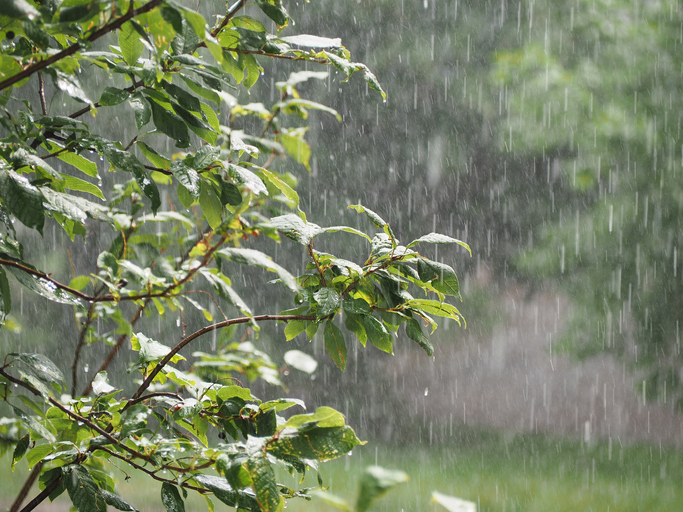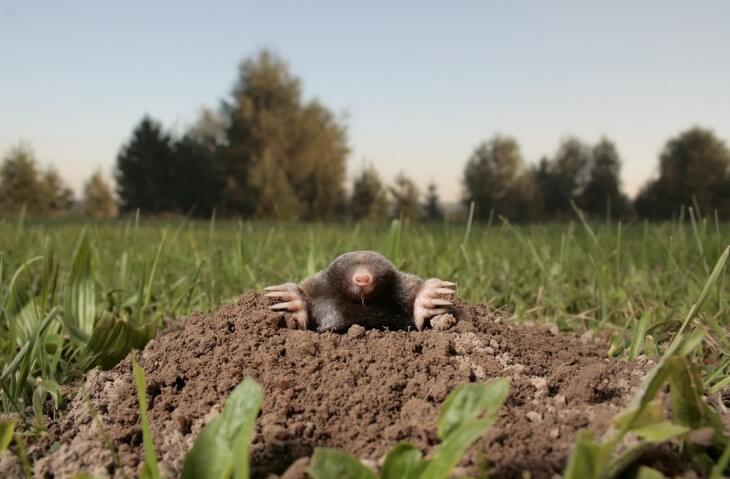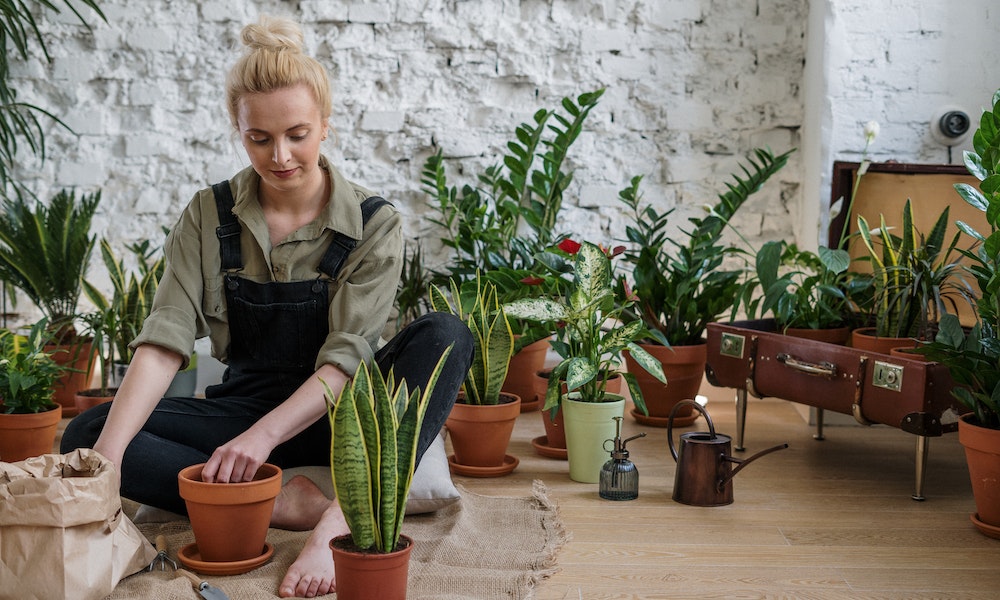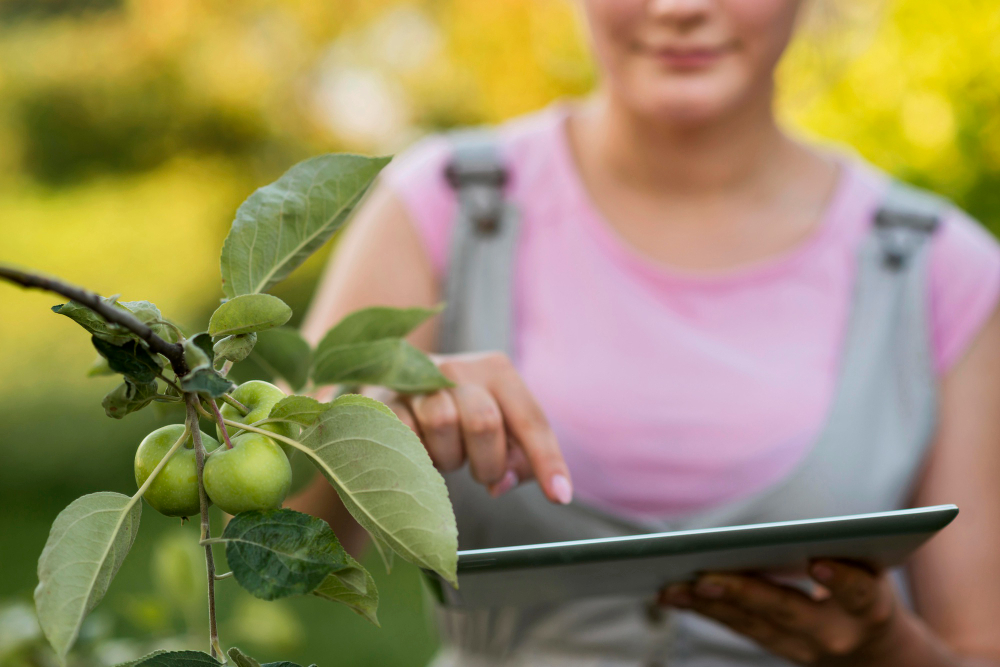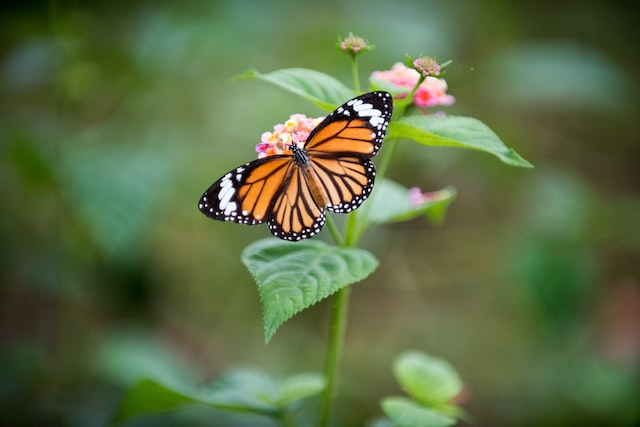If you’re looking for ways to nourish your backyard plants and lawn without wasting water, consider building a rain garden. This method allows you to collect rainwater and stormwater runoff while making the most of this vital natural resource. Even if you’ve never had a rain garden before, this guide shows you the benefits and how it works, including expert tips to help you build and maintain your own rain garden.
What is a rain garden?
A rain garden is designed to collect rain runoff from various surfaces throughout your property, including the roof, driveway, patio, and street. You can even collect water from over-saturated yards. Once the water is collected, it seeps back into the ground slowly. This is designed to prevent the excess water from reaching local waterways while providing you with a safe and sustainable way to water your lawn, garden, and other plants. It’s also a great way to help plants and pollinators during times of drought.
Rain gardens work by allowing rainwater to flow through the garden and absorb into the ground. You can collect the water using a rain barrel, a large container that attaches to the downspout on your gutters. The rain barrels collect the water from your roof and redirects it to your garden. This is an excellent water-saving way to water your plants without using public water or a well.
Rainwater runoff is essentially water that flows from your roof, patio, driveway, and other areas around your home. This type of garden differs from a traditional garden because it’s designed to gather and filter rainwater, while a “regular” garden requires you to use a hose and obtain water from local resources.
Collecting rainwater helps to keep various pollutants like fertilizers, oil, and chemicals out of the waterways. This water can enter storm drains and flow into nearby streams, lakes, and ponds. Using a rain garden allows you to collect this water and filter it via a variety of vegetation. The process filters out the pollutants while also helping you to conserve water use.
To maximize the benefits, approximately six to 12 inches of soil is mixed with compost and sand to promote good water filtration. The garden is usually placed on a downward grade or slope so it can collect the rainwater runoff from your roof, driveway, or lawn. Using native plants ensures no additional fertilization is required after the first year.
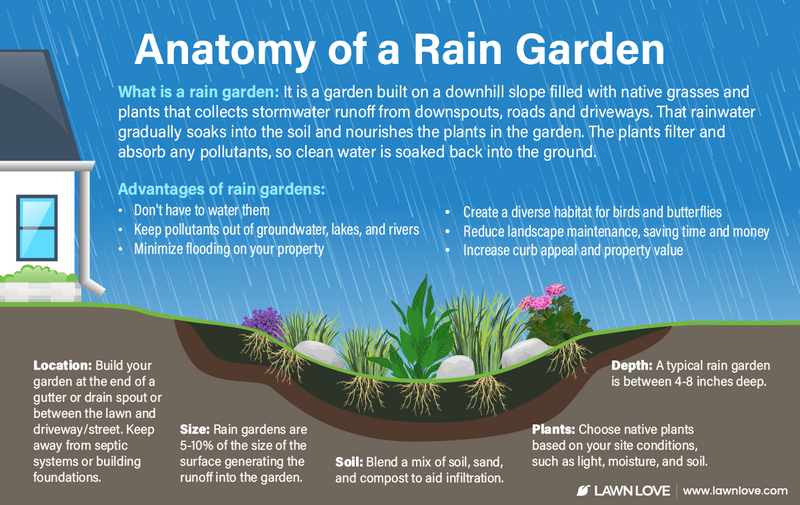
Source: LawnLove.com
The environmental advantages of a rain garden
A rain garden at home can play a significant role in environmental solutions to climate change by helping to mitigate some of its effects and contributing to overall environmental sustainability. Here’s how:
Stormwater Management:
- Rain gardens capture and absorb rainwater, preventing it from running off into storm drains and ultimately into rivers and streams. This helps reduce erosion and pollution in local water bodies.
- By reducing the volume of stormwater runoff, rain gardens can help prevent flooding and water pollution, which can be exacerbated by climate change-induced extreme weather events.
Carbon Sequestration:
- Plants in rain gardens capture carbon dioxide from the atmosphere during photosynthesis, helping to reduce greenhouse gas concentrations and combat climate change.
- Trees and shrubs planted around the rain garden can sequester significant amounts of carbon over their lifetimes.
Temperature Regulation:
- The evapotranspiration process, where plants release water vapor into the air, can help cool the surrounding area, mitigating the urban heat island effect caused by climate change.
- Rain gardens can provide shade and reduce the heat generated by hard surfaces, such as asphalt and concrete.
Biodiversity and Habitat:
- Rain gardens can serve as habitats for various native plants and wildlife, promoting biodiversity. This is essential as climate change disrupts ecosystems and threatens many species.
- Encouraging native plants in your rain garden can also support pollinators, which are crucial for agriculture and ecosystem health.
Reduced Energy Consumption:
- By moderating local temperatures, rain gardens can reduce the need for air conditioning in nearby buildings, leading to lower energy consumption and reduced carbon emissions.
Education and Awareness:
- Maintaining a rain garden at home can serve as an educational tool, helping you and your community better understand the importance of sustainable landscaping and water conservation in the face of climate change.
- Sharing your experiences and knowledge about rain gardens with neighbors and friends can further raise awareness about climate change solutions.
Aesthetic and Property Value:
- Well-designed rain gardens can enhance the beauty of your property while also potentially increasing its market value. This can encourage others in your community to adopt similar practices.
Designing and maintaining a rain garden
Now that you know more about what a rain garden is, it’s time to go into depth about how to build one in your own front or backyard.
Installation
Follow these steps to help you install a rain garden on your property:
- Determine the location: First, find a low-lying area on your property to receive the maximum amount of rain runoff from the driveway, roof, and other impermeable surfaces throughout. Ideally, this area should get approximately six hours of direct sunlight or more per day. It should always be located a minimum of 10 feet away from the home’s foundation to prevent erosion or other water-related damage. Never place your rain garden directly over your septic system.
- Choose the size: Once you’ve found the ideal placement, determine how large the rain garden should be. Measure the area you’ve chosen and then calculate the size by making it around one-third of the contributing area. This term refers to the area where the rain runoff comes from, whether it’s your roof, driveway, or other surfaces. The standard size is typically between 100 to 300 square feet.
- Dig your basin: Dig a basin in the area to the correct depth and shape, which is usually between four and eight inches. Remember that the depth you choose depends on the soil type and its capacity to drain water. There should be a small depression in the middle of the basin which allows the water to pool. Sandy soil has the fastest infiltration, while clay-like soils are the slowest. Ideally, clay soil rain gardens are much larger than sandy or silty soil rain gardens. The garden should be between four and eight inches deep. Consider hiring a handyman to help you remove trees and other items in the way.
- Amend your soil: Once the basin is dug, make a mixture of compost, sand, and other necessary soil amendments. The amended soil helps to improve the fertility of the dirt and its ability to drain water. Mix approximately two to four inches of organic compost with the soil to increase the nutrients and keep plants healthy.
- Remember to mulch: Once you have the location, size, and amendments ready and your plants are planted, spread an even layer of mulch over your garden. Mulch not only makes any garden look better, but it also helps to retain moisture, protect the soil, and keep nasty weeds at bay. You can also use crushed gravel or stone if you choose.
- Build a berm: Add a raised edge or a small berm about eight inches tall around the edge of your rain garden once everything is complete. A berm helps to contain the water and keep it from escaping while also maintaining the level of water your plants need to stay healthy.
- Choose the right plants: When choosing plants for your rain garden, make sure you select plants that will thrive in your specific plant hardiness zone. Refer to this map to help you determine where your plant hardiness zone is located, then use this information as a guide when choosing your plants. Select native plants that can tolerate wet and dry conditions, and plant them in your garden based on their mature size to ensure you’re spacing them correctly. Proper spacing will prevent root rot and allow your plants to grow to their fullest potential. Some of the best plants for a rain garden include a variety of bushes and flowers, like these:
- Plant bearberry bushes in zones 2-6 and bee balm flowers in these zones
- Winterberry does best in zones 3-9
- Beautiful rhododendrons grow well in zones 4-8
- Daylilies should thrive in zones 3-8
- Cleveland sage grows best in zones 9-10

Source: HomeAdvisor
Maintenance
Once your rain garden is set up, and everything is planted, practicing proper maintenance is vital to ensuring your plants remain healthy and thriving. Update your planting plan regularly and take notes if you change anything. This helps you remember where each item is planted and gives you ideas if you decide to make changes later.
It’s important to observe your garden during heavy rains to see where the rain runoff is entering the garden and where it may overflow. Your mulch should remain in place. If you notice that it’s washing away, you might need to add more gravel or rocks to slow the flow down.
Here are a few more tips to ensure you’re properly maintaining your beautiful new rain garden:
- Promote healthy plant growth by watering regularly during at least the first two years. Add water during dry spells or times of extended drought.
- Look at your rain garden carefully after it rains. This is a good time to make adjustments and add any vegetation to areas with erosion.
- Replace your mulch as needed and prune and weed your garden to keep it looking beautiful and healthy.
- You don’t need to fertilize the soil since rain gardens are designed to help the soil absorb all necessary nutrients.
- Check your rain garden regularly and look for dead or dying plants. Replace these plants as needed and change plants if your current selections are not thriving.
- Test the soil in your planting bed to ensure it’s at a good pH level. You may need to adjust (or amend) the soil until it reaches the optimum level based on your plant selections.
- Prune all plants after they finish blooming to promote fast, healthy growth.
- When mowing your lawn, take care not to mow the rain garden. Point your mower away from the garden so the grass clippings don’t reach it. Too much grass results in levels of nitrogen that are much too high for a rain garden since they already have the amount of nitrogen they need naturally.
Rain garden benefits

Once your rain garden is properly installed and maintained, it’ll provide you with a wide range of benefits. Here are just some of the benefits that having a rain garden provides.
- You won’t need to mow this area of your lawn, which saves you time, energy, and money. Rain gardens don’t need to (and should not be) mowed.
- Rain gardens help you with water conservation, ensuring that you’re reducing your water usage and your carbon footprint. You’ll only need to water your garden during times of drought or for occasional maintenance.
- Since rain gardens contain native plants and vegetation, they attract a wide range of pollinators, including bees, hummingbirds, butterflies, and other pollinating wildlife.
- A rain garden also ensures biodiversity, providing an optimum environment for a range of wildlife, including various birds, amphibians, and insects.
- Fertilizers, pesticides, or herbicides aren’t required with a rain garden. Native plants adapt to the weather and soil type on their own, saving time, money, and the environment.
- Your rain garden will divert rainwater away from storm sewers, reducing the system’s load. It also helps to prevent contaminated water from being released into local rivers and lakes. A rain garden recharges local underground aquifers as the water slowly seeps into the soil.
- Since rain gardens soak up approximately 30% more water than standard lawns, they’ll keep muddy puddles and soggy soil from accumulating in your yard. This also results in fewer muddy messes when your pets or kids come inside after playing outdoors.
- Adding a rain garden may improve your home’s curb appeal. It’s also a very nice incentive if you want to attract more eco-friendly buyers.
- Remember that you can make your rain garden any way you like by adding other features, including garden sculptures and decorative items that will give it a pop of personality and unique style.
Rain gardens can prevent your home from flooding
Rain gardens can help to reduce the risk of home flooding by managing stormwater runoff and allowing rainwater to infiltrate into the ground. When it rains, rain gardens capture and absorb the rainwater, slowing down the flow of water and allowing it to soak into the ground. This can help to reduce the amount of stormwater runoff that flows toward homes and other structures.
By capturing and absorbing rainwater, rain gardens can help prevent water from pooling around the foundation of homes, leading to flooding and water damage. In addition, rain gardens can help improve drainage in the surrounding area by allowing water to infiltrate the ground and recharge groundwater supplies.
To prevent home flooding, rain gardens should be located where stormwater runoff is likely to collect, such as in low-lying areas or along slopes. They should also be designed to accommodate the amount of rainfall that is typical for the region, with appropriate soil and plant types to ensure adequate absorption of the rainwater.
Overall, rain gardens can be an effective tool for managing stormwater runoff and reducing the risk of home flooding, while also providing additional benefits such as improved water quality and aesthetic appeal. However, it is important to ensure that rain gardens are properly designed and maintained to ensure their effectiveness in preventing home flooding.
A note on insurance, floods, and your rain garden
If you plan to install a rain garden on your property, it’s important to check with your home insurance company to see if installing it will affect your coverage. While rain gardens are designed to capture and hold rainwater runoff, some insurance companies may view it as a modification that could increase the risk of water damage. As a result, you may need to update your policy to reflect this change.
Additionally, you’ll need to ensure that your rain garden is installed properly and does not cause any damage to neighboring properties. You could be held liable if it causes water damage to other properties. Before installing a rain garden, consult with your home insurance company and a professional landscaper or engineer to avoid these issues.
Finally, regardless of your rain garden, remember that flood damage is typically not covered in a standard home insurance policy. If your main goal for this project is to mitigate the risk of flooding to your home, you may want to explore separate flood insurance coverage.
FAQs
Here are some frequently asked questions (FAQs) about rain gardens to help you decide whether or not it’s the right choice for you.
How much does a rain garden cost?
The cost to add a rain garden depends on how large it is and the plants you choose. It may also cost more if you need to amend your soil or add more mulch. Overall, the average cost of a rain garden is between $3 to $4 per square foot for a residential garden.
Will rain gardens attract mosquitoes?
Your rain garden should not attract mosquitoes; the water shouldn’t stand for longer than 24 hours after it rains. Most mosquitoes can’t complete their breeding cycle within 24 hours because they typically have a seven-to-12-day life cycle. In most cases, your beautiful rain garden won’t increase the mosquito population.
Will only wetland plants grow in rain gardens?
You can grow a variety of native plants in your rain garden, including a wide range of beautiful flowers, shrubs, and other plants. Make sure you know your plant hardiness zone and which plants grow the best in your specific climate and location.
Are rain gardens hard to maintain?
Rain gardens are easy to maintain if you choose the correct type of plants, space them at the proper distance, and apply mulch annually. You may need to do some occasional weeding but it’s typically minimal. As long as you keep a close eye on your rain garden, it should thrive for many years without a lot of maintenance once it’s established.
Will I need to water my rain garden during dry periods?
Ideally, you should water your rain garden regularly during the first two years to help your plants get established. Water every one to two weeks during the first year and every two to four weeks during the second year. Water the rain garden during times of severe drought or if your plants look like they’re “thirsty.”
Do I need to fertilize my rain garden?
You shouldn’t need to fertilize your rain garden since the soil will naturally obtain the nutrients it needs. Adding too much fertilizer can actually do more harm than good, so test your soil and add a layer of mulch to keep your plants healthy and happy.
Where should I place the rain garden?
Always place your rain garden at least 10 feet from your home near an area that collects as much rainwater runoff as possible. This includes your roof, sidewalk, driveway, and wherever water naturally drains.
Now that you know more about rain gardens and their many benefits, you can get to work on your own. Remember the crucial tips from this guide, including the best ways to build and maintain the garden. With the right plants and location, you can enjoy a beautiful, healthy garden that’ll thrive for years to come.
